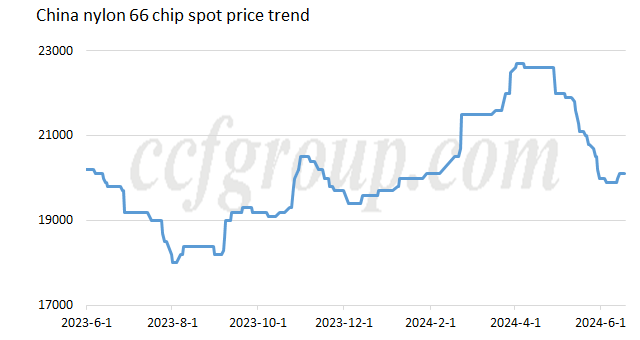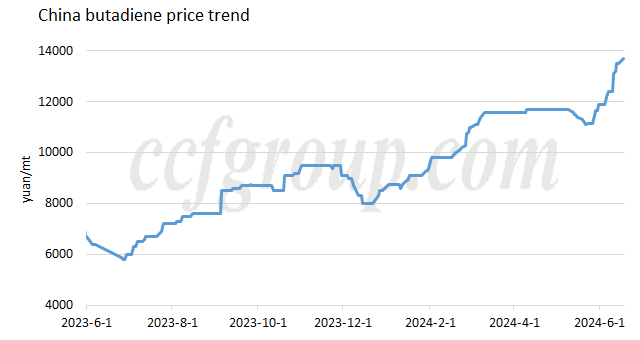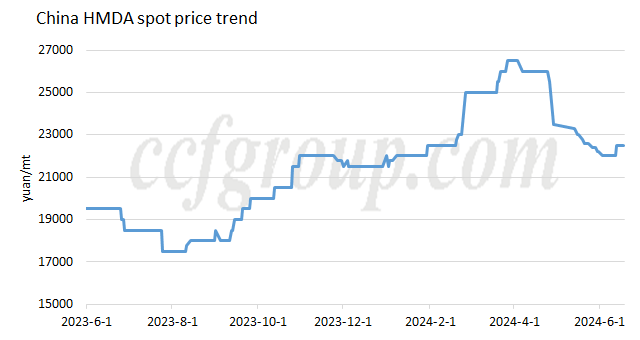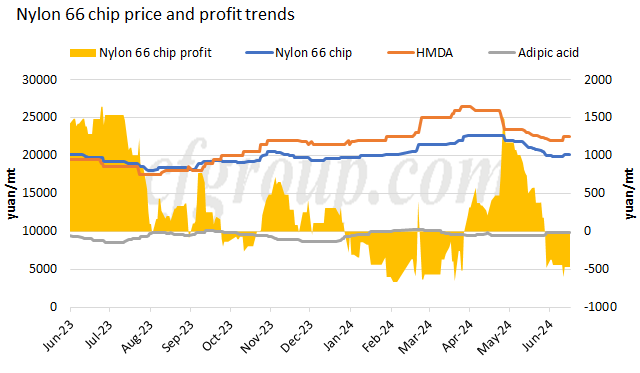Nylon 66 chip suppliers determine to hold prices steady
In the second week of June, the price of nylon 66 chips started to stabilize, ending the previous downward trend. This round of downward adjustments started in April and lasted for about two and a half months. Taking the general-plastic-grade nylon 66 chip as an example, the price dropped from a peak of 22,500yuan/mt to around 20,000yuan/mt currently, representing a decrease of over 10%. This almost offset the previous increase since Invista announced the maintenance plan.

During recent decline, most downstream manufacturers anticipated the bottom to be around the previous low of 19,000yuan/mt. Despite downstream inventories being close to depletion and expecting replenishment in June, the market sentiment remained somewhat pessimistic due to the anticipation of over 200,000 tons of new capacities by enterprises like Invista, Shanghai Shenma, China Resources, and Haoyuan. However, after the price fell just below the 20,000yuan/mt, prices began to stabilize and even saw a slight rebound, defying market expectations. This was mainly due to cost pressures.

As shown in the chart above, butadiene, a primary raw material for C4 process ADN/HMDA, has been consistently rising since the beginning of the year. It stabilized around 11,500yuan/mt before accelerating to 13,500yuan/mt by mid-May. This significant cost pressure for C4 process ADN, with butadiene alone seeing a cost increase of 3,500-4,000yuan/mt since the beginning of the year. The strength of butadiene stems not only from the restart of the Tianchen's ADN plant but also from strong demand in the rubber market this year, which shows potential for the entire year.

In contrast, HMDA prices have remained relatively stable from the beginning of the year to mid-June, based on spot prices. This stability has put visible pressure on HMDA factories. Additionally, the profitability of nylon 66 polymer segment has remained under pressure.

Starting from the second half of 2023, there has been a noticeable decline in polymerization profitability. While chip price increases in April and May drove prices higher, many downstream major customers stocked up on large orders at the beginning of the price hikes, resulting in fewer transactions during the high-profit stage. Previously, most integrated factories relied on HMDA to provide profit margins. After both segments (HMDA and nylon 66 chip) started suffering profit losses, factories decided to hold prices firm, which was followed by other industry players. Some deals previously below 20,000yuan/mt are no longer offered at a discount, and sources near 19,000yuan/mt have increased quotes to around 19,500yuan/mt.
Price protection activities in the industry are usually a last resort, with relatively easier execution due to the smaller number of companies in nylon 66 industry. Similar products such as adipic acid, nylon 66 industrial filament, and nylon film industries have precedents for such actions. Based on past experiences, the ultimate outcome depends not only on industry determination but also significantly on market supply and demand dynamics. In the face of large new production capacities being introduced, it is still uncertain whether price holding will be effective. At least we have seen some restrictions on the supply side, the temporary shutdown of Huafon's Wenzhou factory has been observed, and it is rumored that Invista's new capacity in June will adopt similar strategies of starting new production while stopping older facilities.
However, there will be challenges ahead from the new capacities being introduced by China Resources and Haoyuan. Furthermore, HMDA production based on caprolactam method is currently unaffected by butadiene price increase, showcasing its advantage gradually. If sales at related factories face obstacles, it could pose a significant price risk in the future.
- Top keywords
- Cotton Price
- Cotton Futures Price
- Cotton Futures
- CZCE
- PTA Futures Price
- Chemical Fiber
- Polyester Prices
- Wool price
- PTA Futures
- Shengze Silk
- China
- Yarn Price
- price
- China Textile City
- Fibre Price
- Benzene Price
- Cotton
- Index
- Cotton Index
- PTA
- fabric price
- NYMEX
- Top 10
- textile industry
- Spot Cotton
- Cotton Yarn
- Polyester Price
- Futures
- PTA Price
- cotton yarn price

